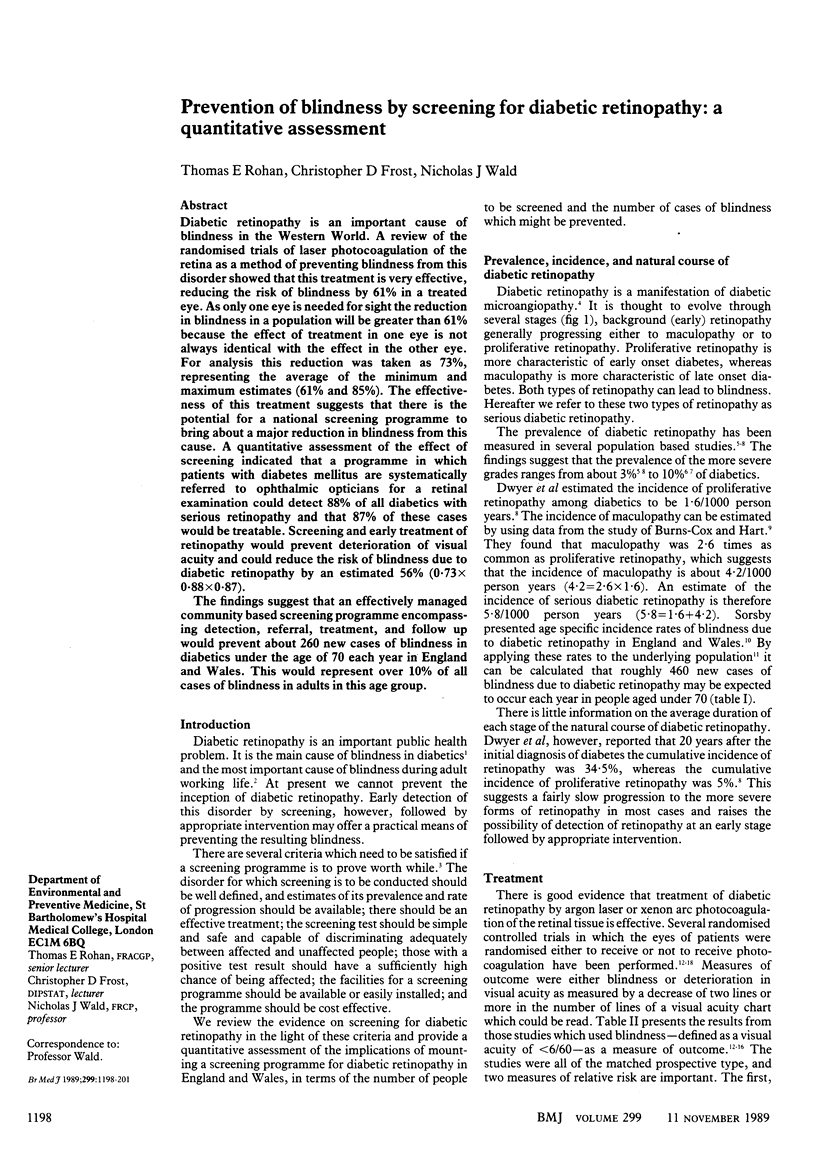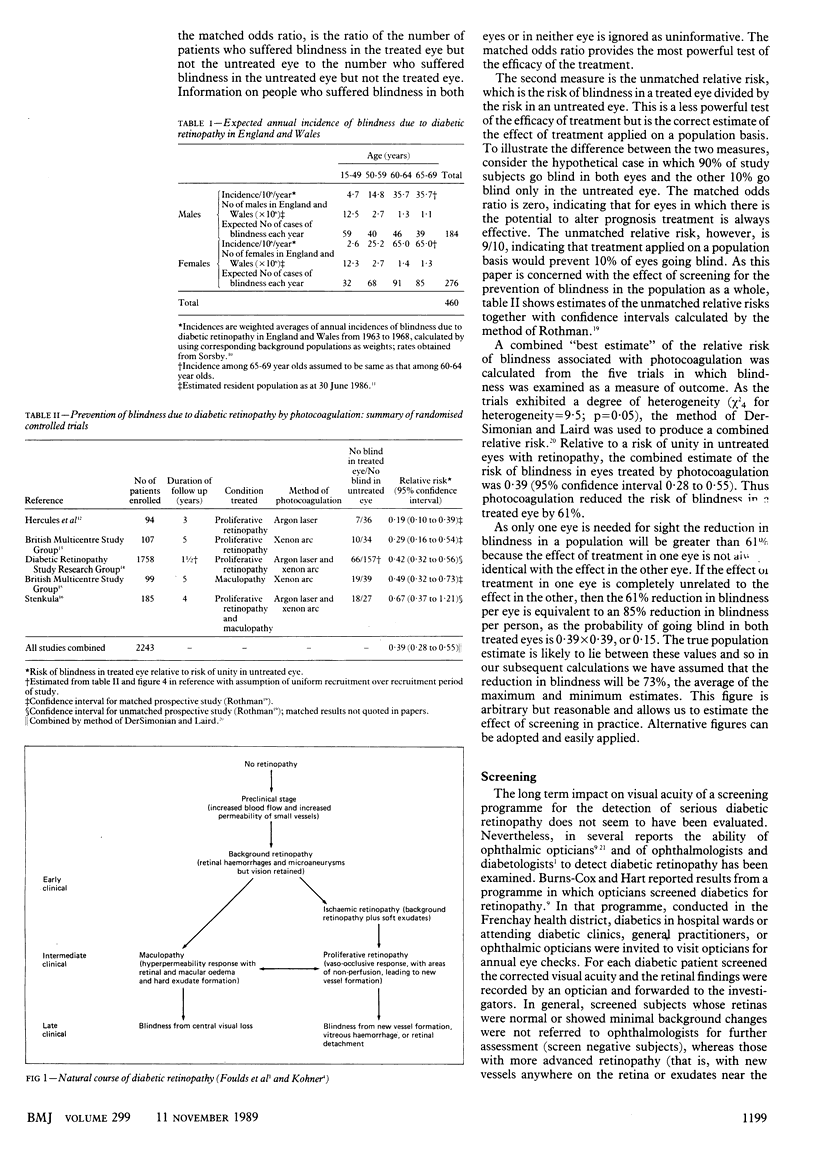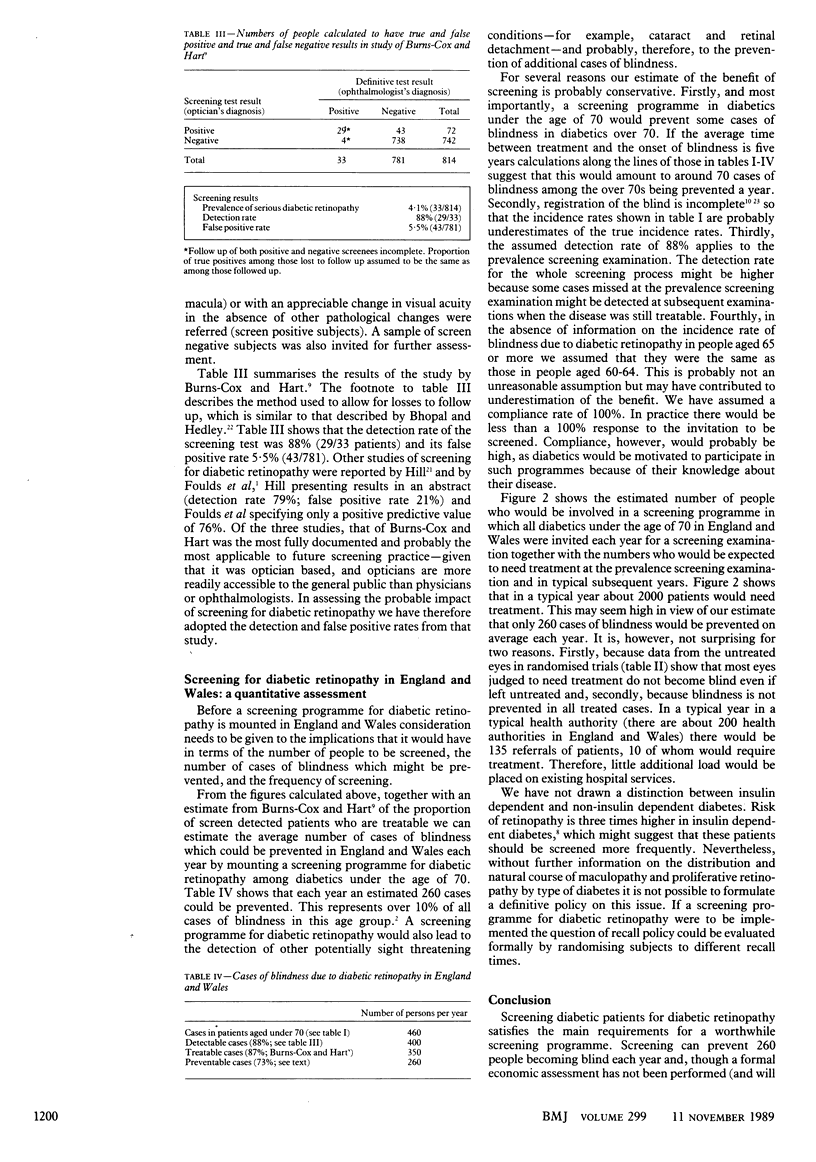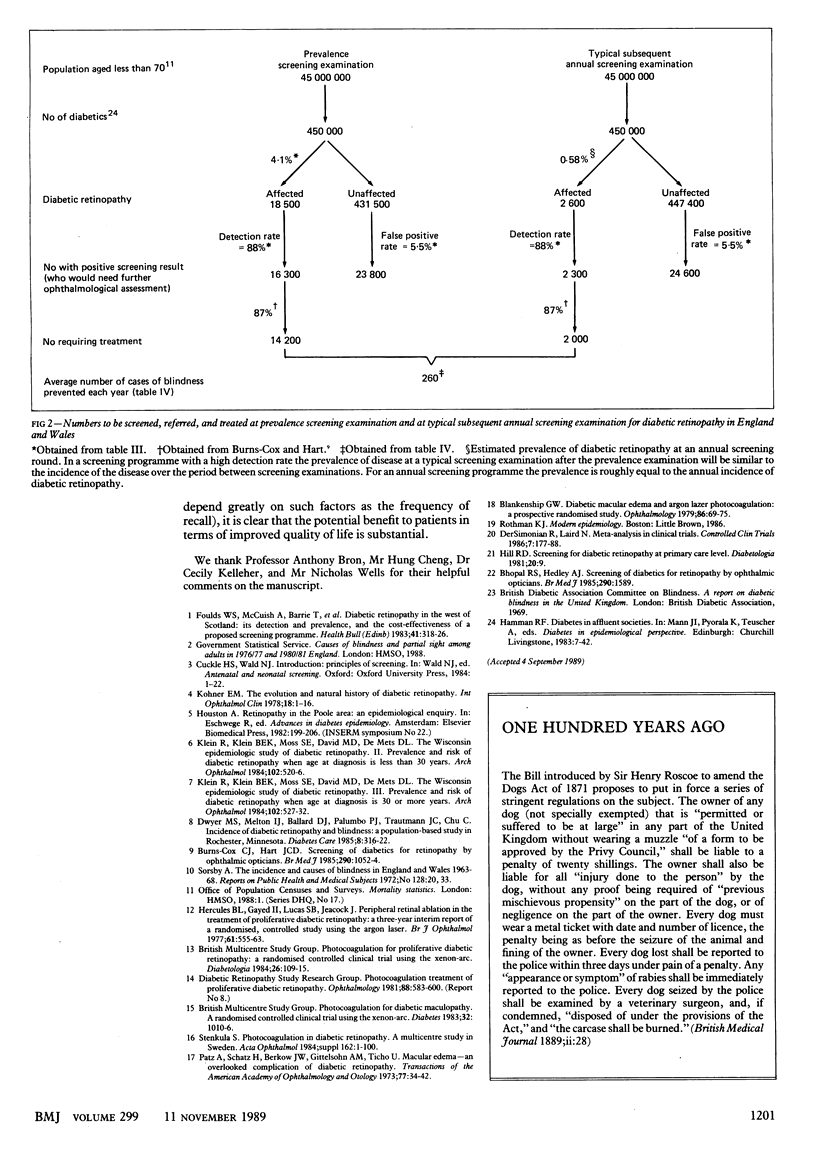Abstract
Diabetic retinopathy is an important cause of blindness in the Western World. A review of the randomised trials of laser photocoagulation of the retina as a method of preventing blindness from this disorder showed that this treatment is very effective, reducing the risk of blindness by 61% in a treated eye. As only one eye is needed for sight the reduction in blindness in a population will be greater than 61% because the effect of treatment in one eye is not always identical with the effect in the other eye. For analysis this reduction was taken as 73%, representing the average of the minimum and maximum estimates (61% and 85%). The effectiveness of this treatment suggests that there is the potential for a national screening programme to bring about a major reduction in blindness from this cause. A quantitative assessment of the effect of screening indicated that a programme in which patients with diabetes mellitus are systematically referred to ophthalmic opticians for a retinal examination could detect 88% of all diabetics with serious retinopathy and that 87% of these cases would be treatable. Screening and early treatment of retinopathy would prevent deterioration of visual acuity and could reduce the risk of blindness due to diabetic retinopathy by an estimated 56% (0.73 X 0.88 X 0.87). The findings suggest that an effectively managed community based screening programme encompassing detection, referral, treatment, and follow up would prevent about 260 new cases of blindness in diabetics under the age of 70 each year in England and Wales. This would represent over 10% of all cases of blindness in adults in this age group.
Full text
PDF



Selected References
These references are in PubMed. This may not be the complete list of references from this article.
- Bhopal R. S., Hedley A. J. Screening of diabetics for retinopathy by ophthalmic opticians. Br Med J (Clin Res Ed) 1985 May 25;290(6481):1589–1589. doi: 10.1136/bmj.290.6481.1589-a. [DOI] [PMC free article] [PubMed] [Google Scholar]
- Blankenship G. W. Diabetic macular edema and argon laser photocoagulation: a prospective randomized study. Ophthalmology. 1979 Jan;86(1):69–78. doi: 10.1016/s0161-6420(79)35534-8. [DOI] [PubMed] [Google Scholar]
- DerSimonian R., Laird N. Meta-analysis in clinical trials. Control Clin Trials. 1986 Sep;7(3):177–188. doi: 10.1016/0197-2456(86)90046-2. [DOI] [PubMed] [Google Scholar]
- Dwyer M. S., Melton L. J., 3rd, Ballard D. J., Palumbo P. J., Trautmann J. C., Chu C. P. Incidence of diabetic retinopathy and blindness: a population-based study in Rochester, Minnesota. Diabetes Care. 1985 Jul-Aug;8(4):316–322. doi: 10.2337/diacare.8.4.316. [DOI] [PubMed] [Google Scholar]
- Foulds W. S., McCuish A., Barrie T., Green F., Scobie I. N., Ghafour I. M., McClure E., Barber J. H. Diabetic retinopathy in the West of Scotland: its detection and prevalence, and the cost-effectiveness of a proposed screening programme. Health Bull (Edinb) 1983 Nov;41(6):318–326. [PubMed] [Google Scholar]
- Hercules B. L., Gayed I. I., Lucas S. B., Jeacock J. Peripheral retinal ablation in the treatment of proliferative diabetic retinopathy: a three-year interim report of a randomised, controlled study using the argon laser. Br J Ophthalmol. 1977 Sep;61(9):555–563. doi: 10.1136/bjo.61.9.555. [DOI] [PMC free article] [PubMed] [Google Scholar]
- Klein R., Klein B. E., Moss S. E., Davis M. D., DeMets D. L. The Wisconsin epidemiologic study of diabetic retinopathy. II. Prevalence and risk of diabetic retinopathy when age at diagnosis is less than 30 years. Arch Ophthalmol. 1984 Apr;102(4):520–526. doi: 10.1001/archopht.1984.01040030398010. [DOI] [PubMed] [Google Scholar]
- Klein R., Klein B. E., Moss S. E., Davis M. D., DeMets D. L. The Wisconsin epidemiologic study of diabetic retinopathy. III. Prevalence and risk of diabetic retinopathy when age at diagnosis is 30 or more years. Arch Ophthalmol. 1984 Apr;102(4):527–532. doi: 10.1001/archopht.1984.01040030405011. [DOI] [PubMed] [Google Scholar]
- Kohner E. M. The evolution and natural history of diabetic retinopathy. Int Ophthalmol Clin. 1978 Winter;18(4):1–16. [PubMed] [Google Scholar]
- Stenkula S. Photocoagulation in diabetic retinopathy. A multicentre study in Sweden. Acta Ophthalmol Suppl. 1984;162:1–100. [PubMed] [Google Scholar]


